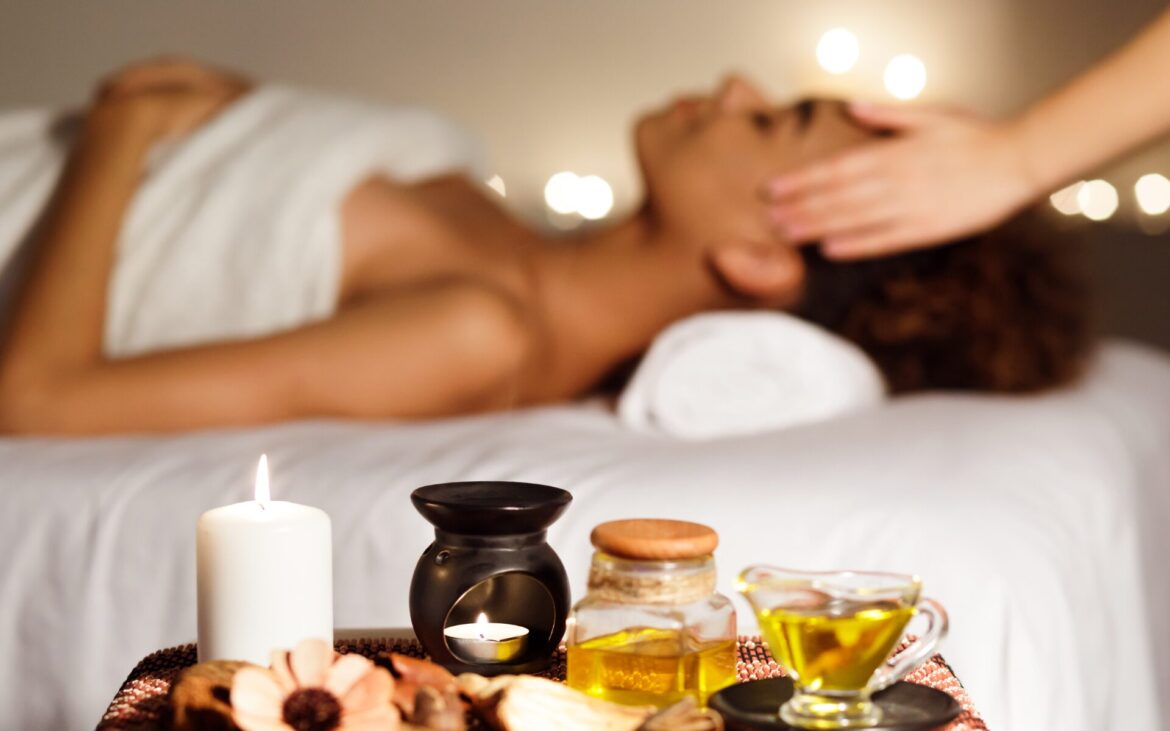Holistic and Alternative Techniques
Interest in holistic and alternative massage modalities continues to grow. Practices such as Thai massage, Ayurvedic techniques, and Shiatsu are increasingly requested for their unique therapeutic philosophies. These treatments emphasise energy flow, posture alignment, and inner balance, offering a different kind of wellness experience compared to conventional Western techniques.
Cupping and Gua Sha have also seen a resurgence, not only for relaxation but for potential benefits such as improved circulation, muscle recovery, and lymphatic drainage. Clients are drawn to these techniques for their novelty, efficacy, and cultural richness.
Sustainability and Ethical Wellness
Sustainability is influencing client choices more than ever. In 2025, people are paying attention to the products and practices used during massage treatments. Organic oils, cruelty-free creams, and ethically sourced materials are increasingly expected.
Spas that highlight eco-conscious practices — recyclable packaging, energy-efficient equipment, and low-impact treatments — attract a client base that values environmental responsibility alongside personal wellbeing. This trend reflects broader cultural shifts where ethical consumption is part of everyday life, even in the luxury and wellness sectors.
Short, Targeted Sessions
Another notable trend is the rise of shorter, highly targeted sessions. Instead of traditional hour-long massages, many clients now prefer 20–40 minute treatments focusing on specific areas like the neck, shoulders, or lower back.
These express sessions cater to the realities of modern life — busy schedules, limited breaks, and the desire for quick yet effective relief. Therapists report that even short, focused treatments can provide measurable benefits in tension reduction, posture improvement, and stress alleviation.
Integration with Fitness and Recovery
Massage is increasingly integrated into fitness routines and recovery plans. Athletes, yoga practitioners, and gym-goers are requesting pre- and post-activity treatments to optimise performance, prevent injury, and support muscle repair.
Sports massage, deep tissue techniques, and targeted myofascial release are in demand, and therapists often collaborate with fitness professionals to design sessions that complement training schedules. This integration underscores massage as an active component of health and lifestyle, rather than a purely indulgent experience.
Aromatherapy and Sensory Experience
Clients are also prioritising the sensory environment. Aromatherapy, soundscapes, and temperature control are now considered essential components of a high-quality massage experience. Essential oils such as lavender, eucalyptus, and sandalwood are used not only for fragrance but for potential relaxation, respiratory, and mood-enhancing effects.
Ambient lighting, curated music playlists, and soft textures enhance the overall sense of immersion. In 2025, a massage is judged as much by its atmosphere and sensory appeal as by the techniques applied.
Accessibility and Inclusivity
Wellness is becoming more inclusive. Massage therapists are increasingly trained to accommodate clients with different physical abilities, age groups, and cultural backgrounds. Adaptive techniques, supportive equipment, and flexible approaches allow more people to access the benefits of massage safely and comfortably.
This inclusivity extends to mental health considerations as well, with therapists being mindful of clients’ emotional comfort, boundaries, and preferences. A welcoming, non-judgmental environment is now a baseline expectation.
Future Directions
Looking ahead, massage in the UK is likely to continue blending tradition with innovation. Hybrid treatments that incorporate physical therapy, mindfulness, and technology will become more prevalent. The trend toward personalization, holistic approaches, and sustainability will likely deepen, reflecting broader societal shifts in wellness, lifestyle, and environmental consciousness.
Therapists may increasingly use data-driven insights from wearable devices, recovery apps, and AI-guided treatment plans to optimise sessions. Meanwhile, experiential elements such as themed rooms, aromatherapy journeys, and multi-sensory experiences will add an element of luxury without compromising accessibility.
Conclusion
Massage trends in 2025 reflect a holistic understanding of modern wellness: physical relief, mental clarity, ethical consumption, and personalised experiences all matter. Clients are seeking more than relaxation; they want treatments that align with their lifestyles, values, and wellbeing goals.
Whether it’s a tech-enhanced session in central London, a holistic Thai massage in the countryside, or a quick targeted treatment during a busy workday, the message is clear: massage is evolving to meet the complex demands of contemporary life.
For UK clients, this means more options, higher standards, and experiences that are tailored, thoughtful, and immersive. The 2025 massage landscape celebrates individuality, mindfulness, and the integration of wellness into daily routines, proving that a simple touch can have profound effects — physically, mentally, and emotionally.

